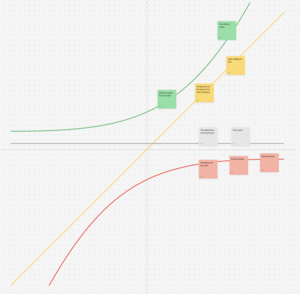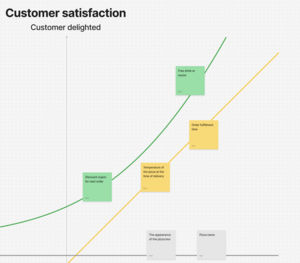
KANO model
The KANO model is one the most effective methods of prioritization. It allows you to look at the importance of tasks from the customer's perspective.
Goal
It allows for a clear hierarchy of what needs to be implemented in the PROJECT by using the Customer's perspective, not a team member's. Each workshop participant must take on the role of a client and view their PROJECT from the perspective of market needs. After testing all the requirement prioritization methods, we believe that the KANO model is the most interesting and engages the team the most in the decision-making process.
A drawback of the MoSCoW method is that prioritization is carried out from an ambiguous perspective. Sometimes, it reflects the perspective of the product owner, while other times, it represents the viewpoint of a product team member. This ambiguity in perspective leads to conflicts and often results in a distorted assessment of the importance of a given project requirement, which negatively impacts the project's success in the market.
Materials
Instructions
Download FigJam template of KANO model or create your own
There are two axes on the matrix that make up four variables:
X-axis: Feature not implemented, fully implemented
Y-axis: Customer delighted, Customer utterly disappointed
Three axes pass through the matrix:
Excitement (unexpected, innovative, something that will make the product/service talked further)
Performance benefit (usually customers expect, the more, the better)
Must-haves (obvious customer expectations)
The team member should place the card on one of the three axes.
You can move the card to the left or right side of the ax. It depends on the level of quality at which we want to implement this idea in the PROJECT.
Next
I recommend to:
- Archiving decisions by taking screenshots.
- Copy made decisions to the IMPACT/EFFORT matrix to prioritize them by effort.
Background
The KANO model was created by Noriaki Kano, a Japanese professor and researcher in the field of quality management, in the 1980s. Kano developed this model to help companies better understand how different features of a product or service impact customer satisfaction.
The described technique structure was tested and updated by The Story team: The Story
Feel free to contact me if you have any questions.




Comments (0) (5.0 avg / 1 ratings)